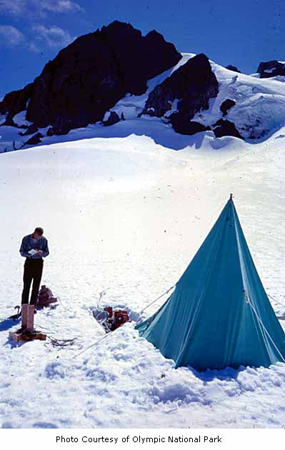| << Chapter < Page | Chapter >> Page > |
The work of sociology rarely happens in limited, confined spaces. Sociologists seldom study subjects in their own offices or laboratories. Rather, sociologists go out into the world. They meet subjects where they live, work, and play. Field research refers to gathering primary data from a natural environment without doing a lab experiment or a survey. It is a research method suited to an interpretive framework rather than to the scientific method. To conduct field research, the sociologist must be willing to step into new environments and observe, participate, or experience those worlds. In field work, the sociologists, rather than the subjects, are the ones out of their element.
The researcher interacts with or observes a person or people, gathering data along the way. The key point in field research is that it takes place in the subject’s natural environment, whether it’s a coffee shop or tribal village, a homeless shelter or the DMV, a hospital, airport, mall, or beach resort.

While field research often begins in a specific setting , the study’s purpose is to observe specific behaviors in that setting. Field work is optimal for observing how people behave. It is less useful, however, for understanding why they behave that way. You can't really narrow down cause and effect when there are so many variables floating around in a natural environment.
Much of the data gathered in field research are based not on cause and effect but on correlation . And while field research looks for correlation, its small sample size does not allow for establishing a causal relationship between two variables.

Some sociologists study small groups of people who share an identity in one aspect of their lives. Almost everyone belongs to a group of like-minded people who share an interest or hobby. Scientologists, folk dancers, or members of Mensa (an organization for people with exceptionally high IQs) express a specific part of their identity through their affiliation with a group. Those groups are often of great interest to sociologists.
Jimmy Buffett, an American musician who built a career from his single top-10 song “Margaritaville,” has a following of devoted groupies called Parrotheads. Some of them have taken fandom to the extreme, making Parrothead culture a lifestyle. In 2005, Parrotheads and their subculture caught the attention of researchers John Mihelich and John Papineau. The two saw the way Jimmy Buffett fans collectively created an artificial reality. They wanted to know how fan groups shape culture. The result was a study and resulting article called “Parrotheads in Margaritaville: Fan Practice, Oppositional Culture, and Embedded Cultural Resistance in Buffett Fandom.”
What Mihelich and Papineau found was that Parrotheads, for the most part, do not seek to challenge or even change society, as many sub-groups do. In fact, most Parrotheads live successfully within society, holding upper-level jobs in the corporate world. What they seek is escape from the stress of daily life. They get it from Jimmy Buffett’s concerts and from the public image he projects. Buffett fans collectively keep their version of an alternate reality alive.
At Jimmy Buffett concerts, Parrotheads engage in a form of role play. They paint their faces and dress for the tropics in grass skirts, Hawaiian leis, and Parrot hats. These fans don’t generally play the part of Parrotheads outside of these concerts; you are not likely to see a lone Parrothead in a bank or library. In that sense, Parrothead culture is less about individualism and more about conformity. Being a Parrothead means sharing a specific identity. Parrotheads feel connected to each other: it’s a group identity, not an individual one.
On fan websites, followers conduct polls calling for responses to message-board prompts such as “Why are you a Parrothead” and “Where is your Margaritaville?” To the latter question, fans define the place as anywhere from a beach to a bar to a peaceful state of mind. Ultimately, however, “Margaritaville” is an imaginary place.
In their study, Mihelich and Papineau quote from a recent book by sociologist Richard Butsch, who writes, “un-self-conscious acts, if done by many people together, can produce change, even though the change may be unintended” (2000). Many Parrothead fan groups have performed good works in the name of Jimmy Buffett culture, donating to charities and volunteering their services.
However, the authors suggest that what really drives Parrothead culture is commercialism. Jimmy Buffett’s popularity was dying out in the 1980s until being reinvigorated after he signed a sponsorship deal with a beer company. These days, his concert tours alone generate nearly $30 million a year. Buffett made a lucrative career for himself by partnering with product companies and marketing Margaritaville in the form of T-shirts, restaurants, casinos, and an expansive line of products. Some fans accuse Buffett of selling out, while others admire his financial success. Buffett makes no secret of his commercial exploitations; from the stage, he’s been known to tell his fans, “Just remember, I am spending your money foolishly.”
Mihelich and Papineau gathered much of their information online. Referring to their study as a “Web ethnography,” they collected extensive narrative material from fans who joined Parrothead clubs and posted their experiences on websites. “We do not claim to have conducted a complete ethnography of Parrothead fans, or even of the Parrothead Web activity,” state the authors, “but we focused on particular aspects of Parrothead practice as revealed through Web research” (2005). Fan narratives gave them insight into how individuals identify with Buffett’s world and how fans used popular music to cultivate personal and collective meaning.
In conducting studies about pockets of culture, most sociologists seek to discover a universal appeal. Mihelich and Papineau stated, “Although Parrotheads are a relative minority of the contemporary US population, an in-depth look at their practice and conditions illuminate [sic] cultural practices and conditions many of us experience and participate in” (2005).

Notification Switch
Would you like to follow the 'Introduction to sociology' conversation and receive update notifications?